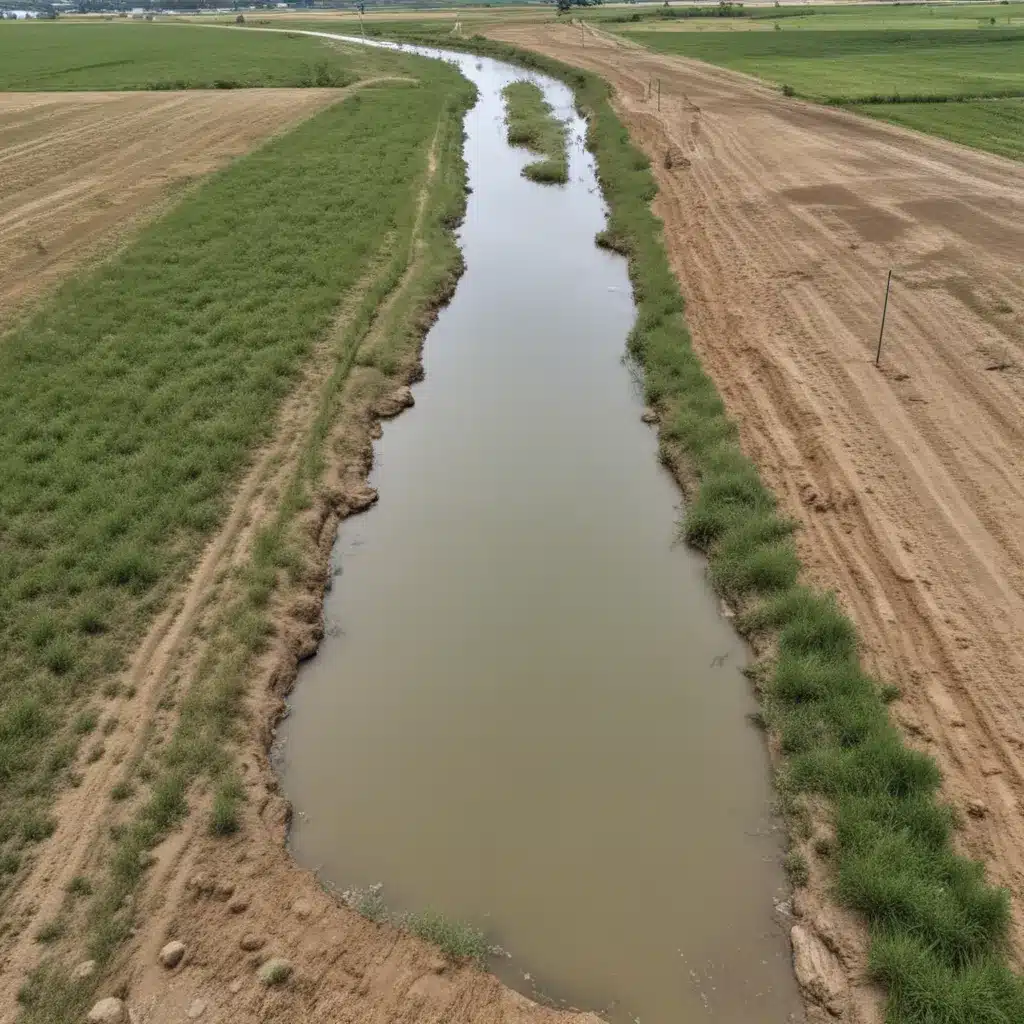
As experienced flood control specialists, we understand the critical role that groundwater management plays in comprehensive water resource planning. In our 15 years installing… In drought-prone regions, capturing and storing excess precipitation is essential for ensuring future water security. However, in areas prone to severe flooding, this challenge takes on an added layer of complexity.
Now, this might seem counterintuitive…
Thankfully, innovative approaches like Managed Aquifer Recharge (MAR) are emerging as powerful solutions that address both flood mitigation and groundwater replenishment. By harnessing floodwaters and directing them into designated recharge areas, water managers can not only prevent devastating inundation, but also sustainably recharge vital aquifer systems. In this comprehensive article, we’ll explore the key principles, benefits, and implementation strategies surrounding this transformative water management technique.
Flood-Managed Aquifer Recharge (Flood-MAR)
At the heart of this approach is the concept of Flood-Managed Aquifer Recharge (Flood-MAR). As the name suggests, Flood-MAR involves capturing excess stormwater or floodwaters and intentionally redirecting them into aquifer systems for storage and future use. This is particularly applicable in regions like California’s San Joaquin Valley, where the seasonal influx of snowmelt and rainfall can overwhelm surface water storage, leading to flooding, while also presenting an opportunity to recharge depleted groundwater reserves.
The process works by directing runoff from rivers, streams, or engineered drainage systems into designated recharge areas, such as natural floodplains, wetlands, or constructed infiltration basins. As this water slowly percolates into the soil, it replenishes the underlying aquifer, effectively storing this valuable resource for drier periods. By harnessing the power of natural processes, Flood-MAR offers a sustainable and environmentally friendly approach to water management.
Benefits of Flood-MAR
The advantages of implementing Flood-MAR strategies are manifold, addressing both flood mitigation and long-term water security:
Flood Risk Reduction: By diverting excess floodwaters into recharge areas, Flood-MAR effectively reduces the strain on surface water infrastructure, such as levees and drainage systems, minimizing the risk of catastrophic flooding.
Groundwater Replenishment: The intentional recharge of aquifer systems helps to restore depleted groundwater reserves, ensuring a more reliable and resilient water supply for communities, agriculture, and ecosystems.
Conjunctive Use: Flood-MAR promotes the integrated management of surface water and groundwater resources, allowing for the conjunctive use of these water sources to optimize overall water availability and sustainability.
Environmental Benefits: The restoration of natural floodplains and wetlands associated with Flood-MAR can provide valuable habitat for wildlife, support ecosystem functions, and enhance biodiversity.
Climate Resilience: By bolstering groundwater reserves, Flood-MAR enhances a region’s ability to withstand the impacts of drought and climate variability, improving long-term water security.
Cost-Effectiveness: Compared to the construction of traditional flood control structures, Flood-MAR can be a more cost-effective approach, as it leverages natural processes and existing infrastructure.
Implementing Flood-MAR
Successful implementation of Flood-MAR requires a comprehensive understanding of the local hydrology, geology, and land use patterns. Water managers might want to carefully evaluate the suitability of potential recharge areas, considering factors such as soil permeability, aquifer characteristics, and environmental considerations.
One approach that has proven effective in California is the strategic use of Aquifer Storage and Recovery (ASR) systems. These systems involve the injection of water into a suitable aquifer through a well during times of abundance, and the subsequent extraction of that water during periods of higher demand. By integrating ASR with Flood-MAR, water managers can create a closed-loop system that maximizes the capture and storage of floodwaters.
In addition to ASR, other Flood-MAR strategies may include the construction of infiltration basins, the enhancement of natural floodplains, and the implementation of low-impact development (LID) techniques that promote on-site stormwater retention and groundwater recharge.
Regulatory Considerations
The implementation of Flood-MAR might want to also navigate a complex regulatory landscape. In the United States, the Clean Water Act and associated Municipal Separate Storm Sewer System (MS4) permits play a significant role in shaping stormwater management practices, often requiring the capture and treatment of the first flush of runoff.
Additionally, water rights and groundwater management regulations vary by state and region, necessitating close collaboration with local authorities to double-check that compliance. In Texas, for example, the Texas Water Development Board (TWDB) has been tasked with conducting statewide surveys to identify the suitability of aquifers for Aquifer Storage and Recovery (ASR) and Aquifer Recharge (AR) projects.
Flood-MAR in Action
The benefits of Flood-MAR are already being realized in various regions. In California’s San Joaquin Valley, water managers have been actively implementing Flood-MAR strategies to address the area’s dual challenges of flood risk and groundwater depletion.
According to a recent report, the region has invested over $1 billion since 2001 in infrastructure and projects aimed at capturing and recharging stormwater. As a result, the county has stored roughly 295,000 acre-feet (nearly 100 billion gallons) of water since last October, enough to supply 2.4 million residents for a year.
These efforts have not only helped to mitigate flood risks, but have also replenished groundwater aquifers, contributing to the region’s long-term water security. The success of these initiatives has prompted water managers in other drought-prone regions to explore the potential of Flood-MAR as a holistic solution to their water management challenges.
Conclusion
As we continue to navigate the complexities of water resource management, innovative approaches like Flood-Managed Aquifer Recharge (Flood-MAR) are emerging as crucial tools in our arsenal. By harnessing the power of natural processes and integrating surface water and groundwater management, Flood-MAR offers a sustainable and resilient solution that addresses both flood mitigation and water security.
As experienced flood control specialists, we encourage water managers, engineers, and policymakers to explore the benefits of Flood-MAR and consider its implementation in their respective regions. By working collaboratively and leveraging the latest advancements in water technology, we can create a more water-resilient future for our communities. To learn more about Flood-MAR and other innovative flood control strategies, please visit Flood Control 2015.
Tip: Regularly inspect and maintain flood barriers and drainage systems















